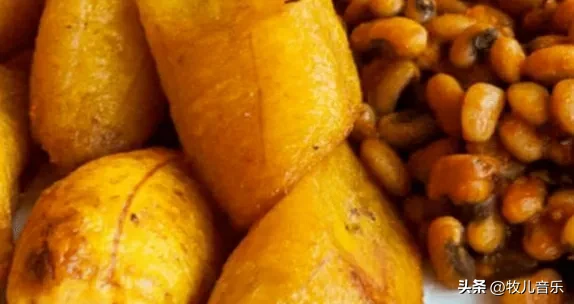Nourish and unite the hearts of the whole family with delicious food. The happiest thing is that the whole family sits around and eats delicious food. As long as you do it with your heart, you can become the best chef. Making tapioca sauce is very difficult. First, mash the cassava and unripe plantains with a large wooden pole and add water to mash. Since it requires vigorous agitation, it usually takes two people to stir, one person knocking and the other moving during the mixing process, once the mixture is smooth, it turns into a small ball and then puts into a stew or broth. Similar to pasta in Tanzania, there is a dent on the ball, used to scoop the sauce, with curd as a spoon, the taste is sticky, elastic and light, but placed in a saucepan, there will be a spicy taste, reminiscent of peanuts. Remember not to eat with your left hand, as in many parts of Africa this is considered disrespectful because the left hand is used to do toilet-related actions. This starchy side dish is an important side dish for a variety of stews and pickles and is often eaten in West and Central Africa. Red rice is a popular Ghanaian stew consisting of beans, red palm oil, tomato sauce and garlic, ginger, pepper and onions. Some chefs prefer to add meat or fish broth to their stew, but this is completely optional. This stew is usually served with fried bananas. There is also a green soup, a delicious Ghanaian soup made from cocoa leaves, smoked fish, mushrooms and snails. Cocoa leaves make the soup have. Soup is a traditional dish of the Akan people and is often eaten with red rice, rice or cooked plantains. Cléwell is a delicious Ghanaian dish made from deep-fried plantain pieces mixed with salt, ginger and chili peppers. Although Claywell is often sold as a dessert by many African street vendors, it is often used as a condiment for bean stews or rice. Some chefs like to add peanuts, cloves, nutmeg or cinnamon to give this food an extra flavor. Taro is the most popular stew in Ghana and Togo, usually made from dried tapioca or yam, water and salt. After cooking, depending on the method of drying the cassava, the color varies from light brown to black. Some consider it to be food for the poor because it is the cheapest main course in Ghana. Can be eaten with soups, gravies or ground peppers. Palm nut soup is a rich Ghanaian dish consisting of palm nut meat, water, fish or meat, tomatoes, onions, pepper, salt, garlic and pepper. The combination of these ingredients is cooked until they become thick and steamy. Soup is sometimes an appetizer before a meal, but is usually a condiment to the dish. It is a Ghanaian dish made from fermented dough of Ghanaian corn and tapioca. It is usually used with a variety of fish dishes, soups and stews, soups and stews. Almost all Ghanaian tribes consumed the Banku, which can be traced back to the Volta River region. Prakali is a traditional attribute of Ghanaian and Ivorian flavors with a strange and sticky taste. It is made by cooking and beating tapioca roots. Food may often become sour because cassava roots ferment before cooking. Pracale is often used as a food for peanut or palm fruit soup.
